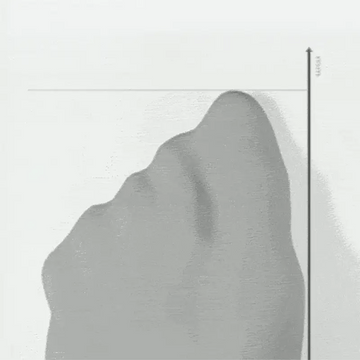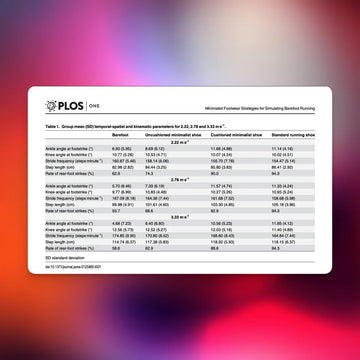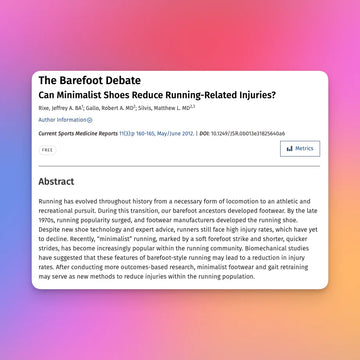Why Choose Barefoot Shoes? Research, Benefits & Transition Guide
Have you ever considered how your shoes affect your body? Standard shoes may seem comfortable, but they alter the way our feet move, which can lead to issues like knee pain, posture problems, and even chronic injuries over time.
Barefoot shoes were designed with a new approach—allowing the body to move naturally, as if walking barefoot. This helps improve physical performance and reduce the risk of injuries, letting your feet function the way they were meant to.
Scientific Benefits of Barefoot Shoes – What Does the Research Say?
Barefoot shoes are designed with minimal cushioning and support, aiming to replicate the sensation and experience of walking and running barefoot. They allow the foot to move freely and naturally, strengthening muscles and enhancing ground feel, which can improve balance, posture, and overall foot health.
Scientific studies suggest that barefoot-style footwear can reduce foot-related pain, enhance proprioception, and promote a more natural gait, leading to better mobility and a lower risk of injuries.

Study #1 - National Library of Medicine
Hanney, Rothschild, and Perkins (2014)
This research compared running patterns between individuals wearing barefoot shoes and those using cushioned shoes with heel padding. The findings showed that barefoot shoes encourage midfoot or forefoot striking, whereas traditional running shoes lead to heel striking.
Why Is This Important?
- Reduced Impact on Joints – Forefoot striking reduces the shock absorbed by the knees and lower back, leading to less strain and potential injury prevention.
- Better Weight Distribution – The impact is spread more evenly across the foot, lowering the risk of chronic injuries such as tendonitis and stress fractures.
However, transitioning to barefoot shoes requires a gradual adjustment period—the body needs time to adapt to the new foot mechanics and strengthen underused muscles.

Study #2 - Academia
Nigg (2009) – Biomechanical Considerations in Barefoot Movement
The Nigg (2009) study examined how barefoot shoes influence the body’s biomechanics during walking and running. According to the research, barefoot shoes enhance movement efficiency and reduce energy loss when the foot makes contact with the ground.
Why?
- Traditional shoes absorb energy through cushioning, leading to energy loss with each step.
- Barefoot shoes allow better energy utilization, enabling the body to move more efficiently.
- Improved Proprioception – The study found that minimalist shoe wearers experience better body awareness, reducing reliance on insoles and external support.
These findings suggest that barefoot shoes promote a more natural and energy-efficient way of moving, helping the body function optimally.

Study #3 - CLoK
Sinclair et al. (2013) – Kinetics and Kinematics in Minimalist vs. Traditional Shoes
This study examined the differences in movement patterns between minimalist and traditional shoes, using specialized equipment to measure joint motion and the forces exerted on them. The findings revealed that barefoot shoes improve foot alignment, reducing stress on the knees and hips.
Why Does This Happen?
- Increased sensory feedback from barefoot shoes helps the body naturally adjust its movement, reducing the risk of injuries such as plantar fasciitis.
- Less impact on joints – Proper foot alignment leads to better force distribution, minimizing strain on the lower body.
However, researchers emphasized the importance of a gradual transition to minimalist shoes to prevent injuries caused by sudden changes in foot mechanics.

Study #4 - PLOS | one
Hollander et al. (2015) – Comparing Minimalist Footwear Strategies
Hollander’s study compared barefoot shoes with other types of minimalist footwear to assess their impact on running biomechanics. The findings showed that minimalist footwear brings movement closer to a natural gait and enhances proprioception (the body’s awareness of its position in space).
Why Does This Happen?
- Increased sensory feedback from barefoot shoes reduces the risk of injuries such as plantar fasciitis by encouraging a more natural foot movement.
- Closer to a natural stride – Minimalist shoes allow the feet to function as intended, leading to better movement efficiency and muscle activation.
However, researchers emphasized the need for a gradual transition to barefoot shoes to avoid injuries caused by a sudden change in foot mechanics.

Study #5 - ACSM
Rixe, Gallo, and Silvis (2012) – Can Barefoot Shoes Reduce Injuries?
This study aimed to determine whether minimalist footwear can lower injury rates among users. Researchers found that barefoot shoes encourage more natural movement and reduce joint stress, thereby lowering the risk of stress fractures and knee injuries.
Key Findings:
- Less joint strain – Barefoot shoes distribute impact more efficiently, reducing excessive pressure on the knees and ankles.
- Improved agility & comfort – Over time, users reported greater comfort and smoother movement as their bodies adapted to minimalist footwear.
However, the transition requires patience. Users who gradually adjusted to barefoot shoes experienced a more natural stride with less reliance on external support.
General Summary – The Science and Practical Benefits of Barefoot Shoes
Barefoot shoes offer significant advantages over traditional footwear, including improved movement patterns, stronger muscles, and a reduced risk of chronic injuries. However, it is important to note that transitioning to barefoot shoes requires a slow and gradual adaptation period to allow the body to adjust.
By promoting a more natural way of moving, barefoot shoes enable greater freedom of motion and healthier biomechanics.
If you have any questions or want to explore the research further, feel free to check out the provided links for full access to the scientific studies.
















